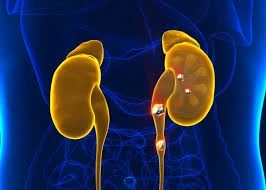Has your back or side ever been super sore? Imagine the pain is intense; it makes you want to curl up. Kidney stones feel like that. Sometimes it's small and will just come out, but sometimes it's big and gets stuck, and then it hurts.
If the stone does present a problem, it must be surgically removed by doctors. Again, there are several ways to perform the removal, and we will speak about them in the article. So, if you think you have a kidney stone or are just worried about having one, this is the perfect place to find out more. Let's get started!
When are kidney stones operated on?
Most of the stones occurring within the kidneys can be treated non-surgically with medication, increased fluid intake, or shock wave lithotripsy. However, surgery may be necessary when:
The stone is causing severe, persistent pain.The stone is blocking the flow of urine.There’s a recurring infection due to the stone.
Types of Kidney Stone Removal Surgery
Surgical treatments for kidney stones include several options. The best choice depends on the size and the site of the stone and your general health.
Open SurgeryLaparoscopic SurgeryPercutaneous Nephrolithotomy (PCNL)Ureteroscopy
Open surgery
Open surgery is like a traditional way to deal with a stubborn kidney stone. It's been around for a long time and is still used today, especially for large or complex stones.
Why is it done?
Large stones: Open surgery is viable if a kidney stone is large enough to rule out other approaches.Complex cases: In case the stone is in a position from where it cannot be removed easily or when another defect exists in the kidney, open surgery is used.
How is this done?
An incision: Under general anaesthesia, a surgeon makes an incision in your side and exposes your kidney.Stone removal: The surgeon gently removes the stone from your kidney.Closing: The cut is stitched closed.
Recovery:
Hospital stay: You'll likely stay in the hospital for several days.Pain management: You'll need pain medication while you heal.Healing time: Recovery from open surgery takes longer than other methods.
Laparoscopic surgery
Laparoscopic surgery is a new development in the removal of kidney stones without a large incision. Instead, big cuts are replaced with small instruments and a minor camera through which some small holes are created in the body.
Doctors have these special tools that they put into the holes and, with a camera, look inside your body to find the kidney stone. Then, they use the tools to carefully remove the stone.
Why is it better?
Smaller cuts: This means less pain and a quicker healing time.Shorter hospital stay: You can often go home sooner after the surgery.Smaller scars: The tiny cuts leave very small scars.
Percutaneous nephrolithotomy
A percutaneous nephrolithotomy, or PCNL, is a procedure for removing stones from the kidney. The PCNL technique represents the therapy for large kidney stones that otherwise could not be managed by modalities like shockwave lithotripsy or ureteroscopy. It offers an alternative to open surgery, with all the advantages of small incisions, less pain, and shorter hospitalisation.
Process:
Doctors notice a small cut in the back, just near the kidney.Under X-ray guidance, a thin tube is inserted through the incised kidney and down into the centre of the kidney.A special needle goes through the tube to find the kidney stones and break them up.The stone fragments are then removed using the same tube or suction.A drainage tube may be placed in the kidney for drainage and healing.
Ureteroscopy
Ureteroscopy is an endoscopic examination of the urinary tract for both diagnosis and treatment. A ureteroscope is inserted into the body via the urethra and the bladder, travelling up to the ureters.
Process:
One is often advised to be comfortable during general or spinal anaesthesia.The urethral guide is first gently passed through the urethra into the bladder and introduced into the urethra.This urine machine has a camera that projects live images of the urethra and kidneys directly, thus enabling the dentist to assess areas of discomfort or other problems.Some of the treatments for kidney stones include laser lithotripsy, where small fractures are made, or other treatments with the help of a receiving helmet that may include biopsy or stent placement if required.Afterwards, the infusion guide is slowly withdrawn, after which the patient is monitored for recovery.
Conclusion
Kidney stones can be painful and distressing, but with the advent of new techniques in surgery comes relief. From open surgery to minimally invasive techniques like laparoscopy, PCNL, and guided urinary, doctors are managing to treat kidney stones these days. Timely diagnosis and appropriate treatment avert serious complications and helps you get rid of intense pain and discomfort.


